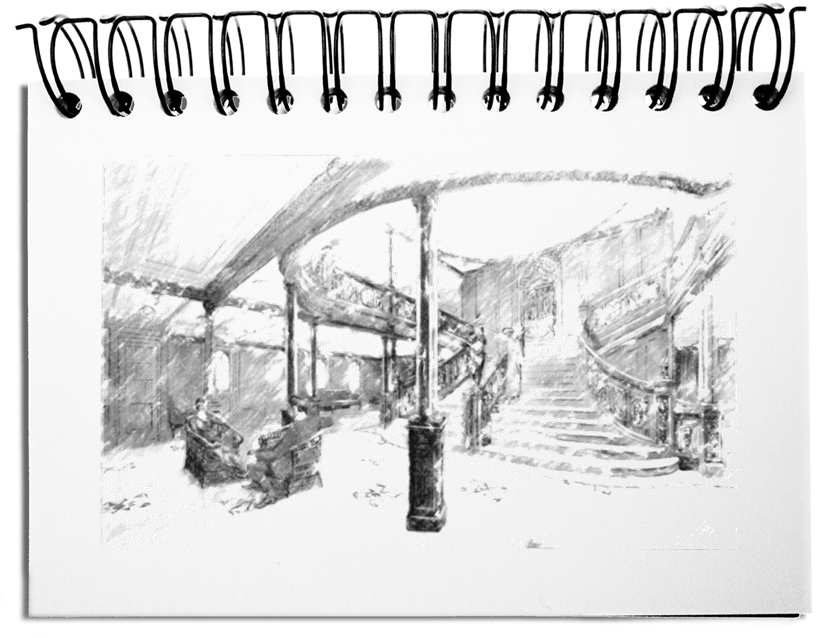On the tenth of April 1912, the Titanic started from Southhampton on its long-distance maiden voyage to New York. At that time, it was the largest passenger ship. Fortunately, of the 3,300 passengers allowed on board (in addition to the 900 members of the crew), only 2,400 were on board. Until the collision with the iceberg, the steamer was considered the safest ship of its kind. In other words, further away from a crisis than any other ship. After the sinking, design changes were made, the number of lifeboats was made dependent on the number of people on board, and regular inspections were required. Everyone who travels on a passenger ship knows about the mandatory drills conducted within the first 24 hours at sea. For a quick rescue, radio communications have been reorganized – 24h radio operations, a secondary power supply for radio, rockets only to be used for emergencies. Nowadays, airplanes patrol to detect icebergs at an early stage. However, emergency efforts do not mean that everyone is in constant distress. As long as a system does not fail, it operates regular. Despite this simple truth, those in charge in the corps behave as if they are perpetually in crisis mode.
However, this general crisis mode is counterproductive because it overloads the participants endlessly and leaves them accustomed to this state. To be able to use the momentum of a crisis, people should differentiate various crisis modes.
- Potential crisis
This state is part of regular operations. No crisis is taking place yet. However, leaders are developing the understanding that difficulties are conceivable. Although they do not like surprises, meritocratic leaders find it difficult to invest in assumed themes. For them, the best-case scenario only offsets the effort by avoiding damage. It all starts with creating an awareness of the need. First and foremost is the unbiased description of dangers and effects, such as the legal duties, possible economic damage to the company, and drawbacks for oneself.
Established crisis management is the basis for mitigating incidents. It includes clear roles, processes, different scenarios, regular discovery, observation, and assessment of the imaginable crises. - Latent crisis
We are still in daily biz, but we recognize the first signs of a crisis. The main objective is to avoid the occurrence of an emergency. For this purpose, predefined measures are triggered to prevent damage. The greater the possible harm and the more likely the crisis is, the more elaborate the measures have to be. The profit arises from the fact that NO significant disruptions occur.
For this purpose, early warning sensors and safeguards are installed at the identified weak points in the biz model, the organization, and the infrastructure. Key figures alert decision-makers to undesirable changes in operations and crisis management. In preparation, susceptible building blocks are additionally maintained, and exercises are carried out just in case. - Acute crisis
The tipping point, and thus a crisis, is reached when a disruption makes normal operations impossible. Now the crisis team should quickly take up its positions. During this process, the prepared emergency plans are executed. Those responsible are focused on remedying the plight. Resources are directed to the essential points. The information flow is ensured. The stress reactions of those involved are alleviated.
Depending on the scope of the incident, these can be short engagements of a few hours or very long deployments of several weeks and months. These involve troubleshooting, performing emergency care, and executing measures for survival. The duration of the crisis depends mainly on adequate preparations. - Survived Crisis
The crisis ends with the canceling of the acute incident. Thus, the unit is not yet back in stable condition, but the obstacles are eliminated. After that, the clearance starts, restoring the ability to work, and regular operations start. It requires sifting through the damage. Reconstruction is planned. The necessary resources are provided. The previous decision-making paths are reactivated. The personal stress aspects and trauma of those affected are treated. In parallel, the review of what happened starts. In an After Action Review, the incidents are evaluated with representatives from the areas involved – especially the root causes.
It is the start of preparing for the following incident. The findings are incorporated into the crisis preparation and made available to everyone – e.g., the insurance companies, supervisory authorities, bodies, and the leadership team.
Bottom line: Dealing with crises requires more than spontaneous decision-making in the acute case. Above all, everyone must be prepared for possible crises. Without an acute crisis, it requires a shared understanding of crises and the various crisis modes alongside normal operations. Everyone should know that potential crises go far beyond the imagination of those responsible – as we have seen vividly since the beginning of the Corona crisis. The decisive factor is a skillful assessment of the risks – how probable and how severe. The mandatory training develops then an emergency plan for all conceivable cases and case types (e.g., economic, social, technical, legal). In this context, all threats can never be recognized and correctly assessed. To react appropriately, coherent preparation and follow-ups are indispensable. The defined crisis modes demarcate normal operations from the real crisis. Above all, leadership awareness of possible incidents should be raised and linked to concrete tasks, competencies, and responsibilities. The annual exercise keeps those involved fit for the cases that should be prevented. An endless horror story is devastating for preparation, making crisis the norm. It takes away the urgency and momentum of the organization to resolve the crisis.


